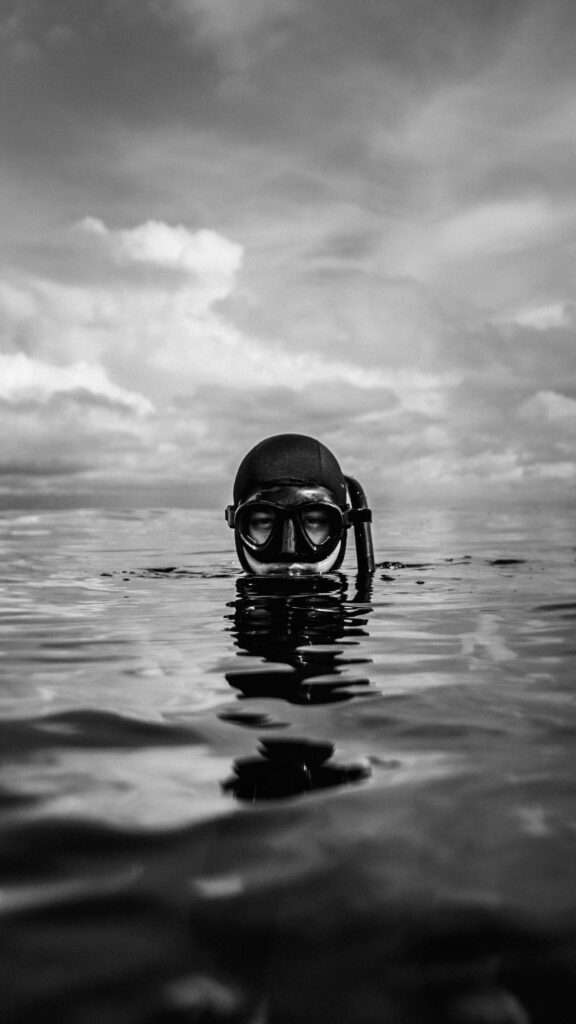Continuing our series in conjunction with scuba.com – your one-stop-shop in North America for dive gear, snorkelling equipment, general watersports kit and much more, with a huge online presence and stores in New York City and Costa Mesa, CA – we've teamed up to compile a helpful guide on how to take care of and clean your wetsuit. Read on as Rianne Poesse provides some useful hints and advice…
There are many high-quality wetsuits on the market. They come in all kinds of colours, models and, of course, thicknesses. They’re made of very flexible and strong neoprene and are usually quite comfortable when you wear the right size. And there’s one thing all these wetsuits have in common – you need to properly clean and take care of your scuba wetsuit.
Maybe you own a scuba-diving wetsuit already, or are thinking about getting one. Then this guide is a great read for you. You will learn all about taking care of your wetsuit for both hygienic reasons as well as longevity. Because a well-maintained wetsuit can last you a very long time!

How to put on your wetsuit
This may sound a little basic, but the struggle can be real. Putting on your wetsuit can sometimes feel like a workout. Especially with older models, where the neoprene isn’t as flexible as newer wetsuits, it can be a real challenge to put it on. Fortunately for us, the newer model wetsuits — even the thick 7/8mm ones — are now made with a much-more-flexible neoprene.
Before we get into handling your wetsuit, it’s important to emphasize, purchase or select the right wetsuit for your body first. It goes without saying that when choosing your wetsuit, you should make sure to get one that really fits you. Not just ‘almost', but one that really fits you. If you get one that is too tight or too short, it will squeeze and possibly rip. If you get one that is too long or too loose, it will not keep you warm as it can’t insulate effectively. So the first step to having a long-lasting wetsuit is having a wetsuit that fits.
Once you’ve found the right wetsuit for you, the first thing that’s important is how you put it on. The most-important thing is to not pull too hard or force anything. That’s when you can rip the wetsuit.
Tips for putting on your wetsuit
- Use a plastic bag to slide through the leg and arm holes. This is a great trick, especially with thicker wetsuits, your hands and feet will slide through smoothly. Often by placing a plastic bag over your hand or foot, it will make this task easy.
- Use some wetsuit slide lubricant. Just like the plastic bag, you can spray it on your hands and feet and you can slide right in. Or you can spray it also on the inside of your suit before putting it on.
- Put it on while in the shower or if you’re in the water. Now this definitely doesn’t work for everyone and everywhere, but depending where you are you might find it easiest to just jump in the water with your wetsuit and put it on there. The water will help loosen up the wetsuit and you can slide right into it. This also works great for taking it off after a dive. Naturally, this is only advised in warm and calm water, where you can easily get out again and continue gearing up.

How to take off your wetsuit
Once your dive is done, you’re ready to take off your wetsuit. Again, make sure to not use any force. Depending on the wetsuit, often a little help from a buddy is welcome. They can assist to slide it off your shoulders or unzip the suit. For your safety, it’s best to sit down on a bench once you have the wetsuit halfway. This way you can’t accidentally fall when removing your legs from the wetsuit.
Don’t worry about the wetsuit being inside out — that’s actually the best way to have it after diving, because it’s actually better to rinse and dry it inside out.
How to rinse and clean your wetsuit
After a dive, you should always rinse out and clean your wetsuit with fresh water. This is especially important when you have been diving in salt water. If salt water dries in your wetsuit, it can really damage it. Even when you’re planning to make another dive on the same day, and are just enjoying a surface interval, it’s worth it to rinse your wetsuit.
This is even more true if it’s a sunny day. When the sun shines straight on a salty wetsuit, the water will vaporize, leaving the salt to form crystals inside the wetsuit. These sharp crystals can damage the neoprene structure. Direct sunlight is your wetsuit’s worst enemy. Even when a wetsuit is not salty, neoprene exposed to direct sunlight will deteriorate quicker, colours will fade, and it will become less stretchy.
Almost all dive shops and liveaboard boats provide rinse tanks. These are big tanks filled with fresh water where divers can rinse off all their gear. Usually there are different rinse tanks for different equipment, for example; cameras, computers, and masks usually have their own rinse tank and so do regulators. Then most neoprene like your wetsuit, boots, and gloves will be rinsed together with your BCD in a different tank. This is also the tank that gets the saltiest and dirtiest the quickest. So if you notice the rinse tank is full with sand on the bottom and salty water, then make sure to ask for the water to be changed.
The best way to clean your wetsuit is inside out. This should be quite easy as usually when you take of your wetsuit it will turn inside out anyways. The reason we advise you to rinse it inside out is because that is the way you want to start drying your clean wetsuit.

How to dry your wetsuit
Now, we already know that direct sunlight on your wetsuit can be damaging so the first thing to note is do not dry your wetsuit in direct sunlight. Neoprene also does not like heat. So don’t ever think about putting your wetsuit in the dryer; it will be catastrophic.
We found that a nice spot in the shade outside or a ventilated room to be ideal to dry your wetsuit. Find somewhere where the air flows through — this can be stimulated by a simple fan.
It’s highly recommended that you use a special wetsuit hanger to hang up your wetsuit. These hangers have wide shoulder width designs, or at the minimum nothing pointing into the wetsuit. Using a special hanger prevents your wetsuit from stretching at the shoulders or getting hanger marks in it. Wetsuit hangers are also stronger than a regular clothes hangers, making it possible to hang up your wetsuit soaking wet without the hanger snapping.
It can take hours, and up to days, for your wetsuit to dry. It all depends on the climate. Dry it in a warm breeze will get it dry the quickest, meanwhile a cold and damp environment will definitely prolong the dry time. Once your wetsuit is dry from the inside, it’s time to flip it right side out and let the outside dry. After the wetsuit is completely dry, it’s time to store it properly, until your next dive.
How to store your wetsuit
The most ideal way to store your clean wetsuit is by hanging it in a dry space on a wetsuit hanger. However, if don’t have the facilities to hang your wetsuit, you can also fold it once and store it in a dry container box. If you do end up storing your wetsuit in a box, make sure there are no heavy items pressing down on it or sharp objects prodding into the wetsuit. Ideally it’s the last piece of scuba equipment that goes on top of everything else.

How to maintain your wetsuit
Even if you rinse your wetsuit after every dive and follow all the rules, it will still need some maintenance in terms of cleaning the wetsuit properly and making sure the zipper keeps working. How often it needs maintenance depends a bit on how often and much you dive. If you go on yearly dive holidays, it makes sense to do a maintenance cycle at home after the holiday. If you dive the entire year, then schedule to do this every four months or so.
Use a wetsuit shampoo and cleaner
For cleaning the suit, you’ll need a special wetsuit shampoo or cleaner. There are many wetsuit cleaners on the market. They’re usually very easy in use. Simply fill your bath tub or another big tub with warm water and add the wetsuit shampoo of your choice. Besides salt and minerals, these shampoos also remove bacteria and smells.
Wetsuit cleaners are also definitely the way to go if you happen to pee in your wetsuit from time to time. Don’t worry, a lot of scuba divers do it, although almost nobody will admit to it. If it happens, just make sure to get one of the wetsuit cleaners that deodorizes urine smells. And truth be told, you can really smell the urine odor, so make sure to clean your wetsuit straight away to prevent the smell from sticking around.

Wax zippers
After thorough cleaning, and once your wetsuit is once again completely dry, it’s time to inspect and wax the zippers. Some wetsuits only have one zipper on the back or front, and others will also have zippers on the neck, ankles, and/or arms. All these zippers need to be waxed from time to time, to ensure smooth zipping.
Simply get your hands on a zipper lubricant or zipper wax and make sure your zipper is clean when applying the wax. You apply it by simply rubbing the wax gently up and down on the zipper teeth. Then zip and unzip a couple of times to make sure all zipper teeth are covered and you’re done.
How to fix your wetsuit
Sometimes accidents happen. For example, you accidentally touch a sharp object with your wetsuit and end up getting a cut in the neoprene. In many cases, it can be fixed properly and directly. There are many different neoprene wetsuit adhesives on the market that you can use to glue the cut. Depending on the severity of the cut and the location, you will want to make sure you get a wetsuit sealer or neoprene glue that is very flexible and waterproof.
Another thing that can happen to your wetsuit is a thread getting loose. What ever you do, don’t pull the thread! Instead, cut it off and then also use a transparent or black wetsuit adhesive to seal the end where you cut it off and any other seams that seem to become more fragile.
If the damage to your wetsuit is bigger and you’re not sure you can repair it yourself, it’s time to take the wetsuit to either a tailor who knows their way around neoprene, or a local dive shop that offers repairs.
How long does your wetsuit last?
If you take care of, clean, and repair your wetsuit, your wetsuit should last you years. Of course, there are exceptions, if, for example, you dive almost every day. No matter what you do, you will always have regular wear and tear. Luckily, good maintenance of your wetsuit should make it last a long time.










I used tohave a length of plastic pipe, about 3 or 4 feet long, with a rope passed through it. Hang it in a draft and put my suit over the pipe. Dries perfectly. Able to hang fins and other accessories to dry at the same time. Works well for long term storage. No creases or sharp edges.